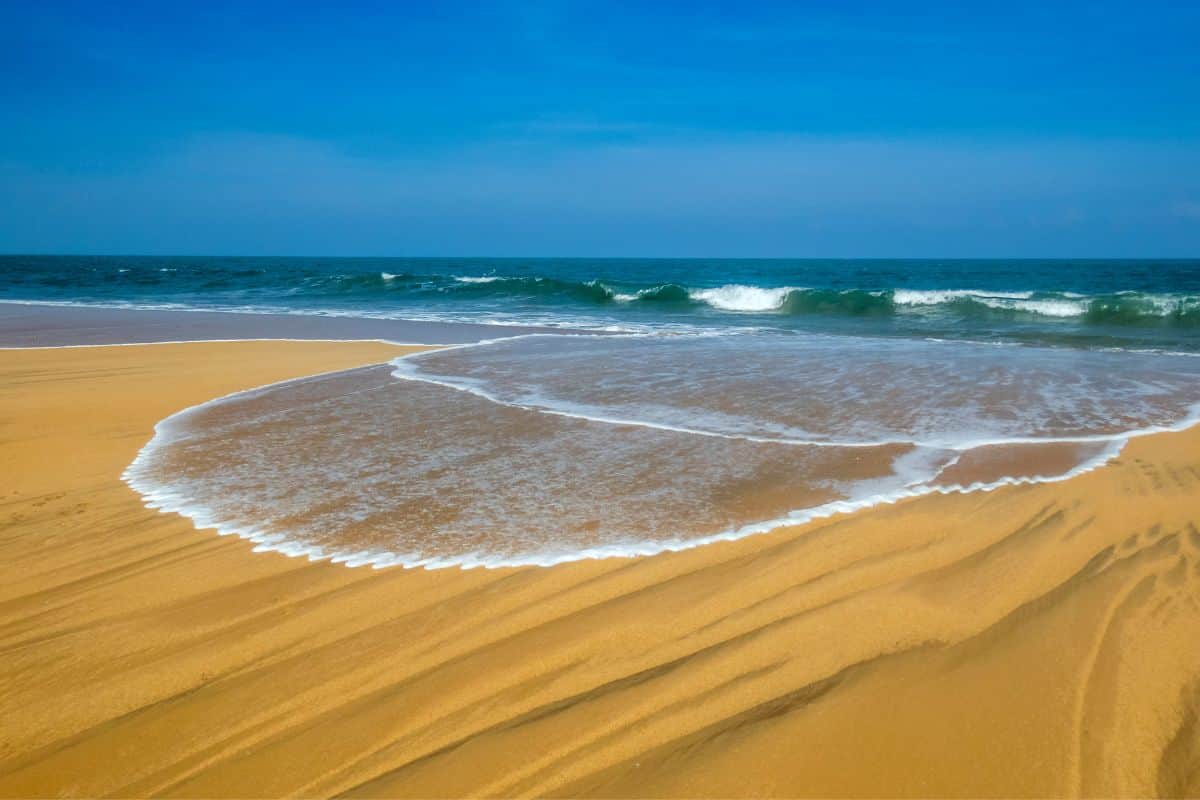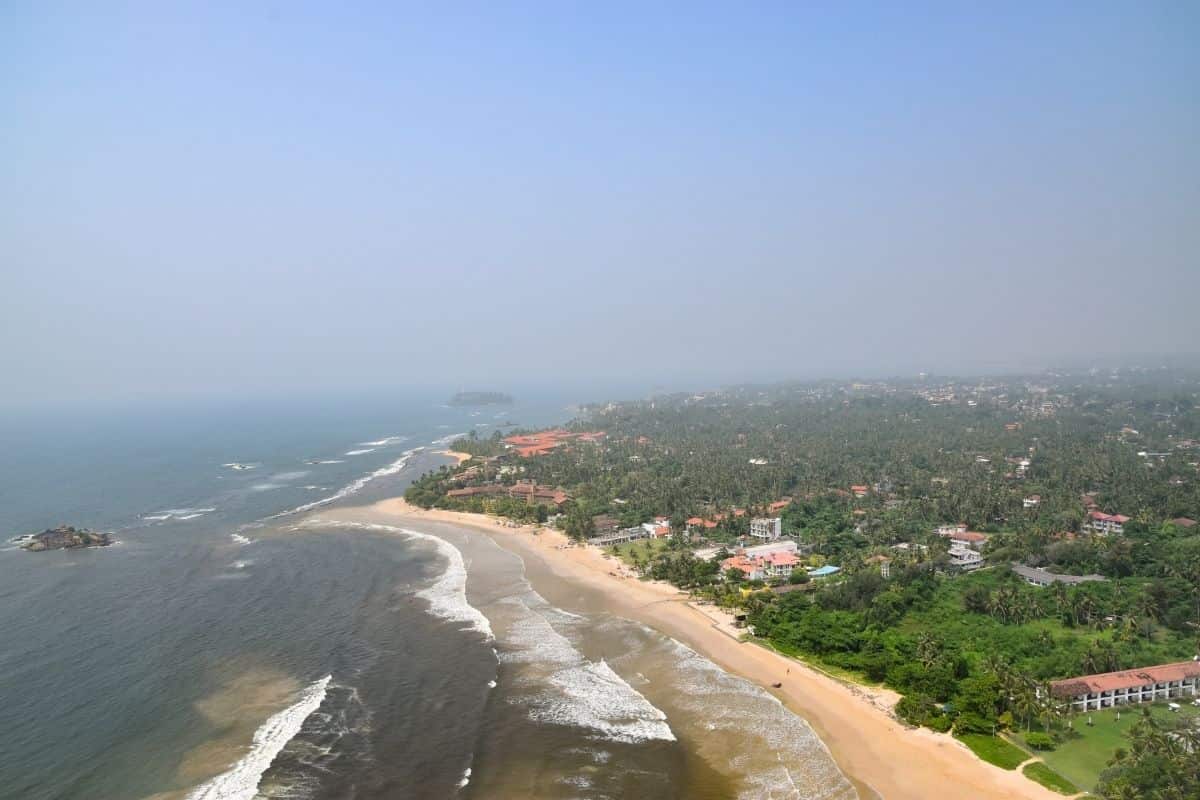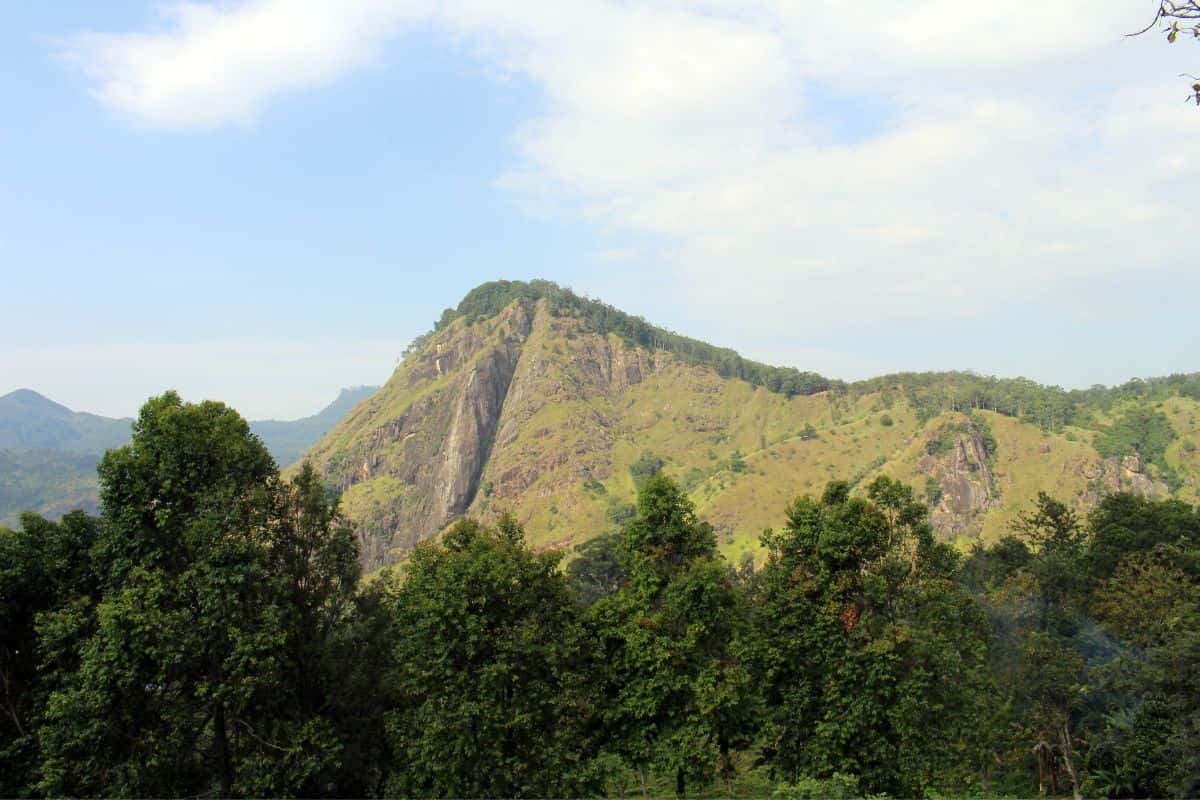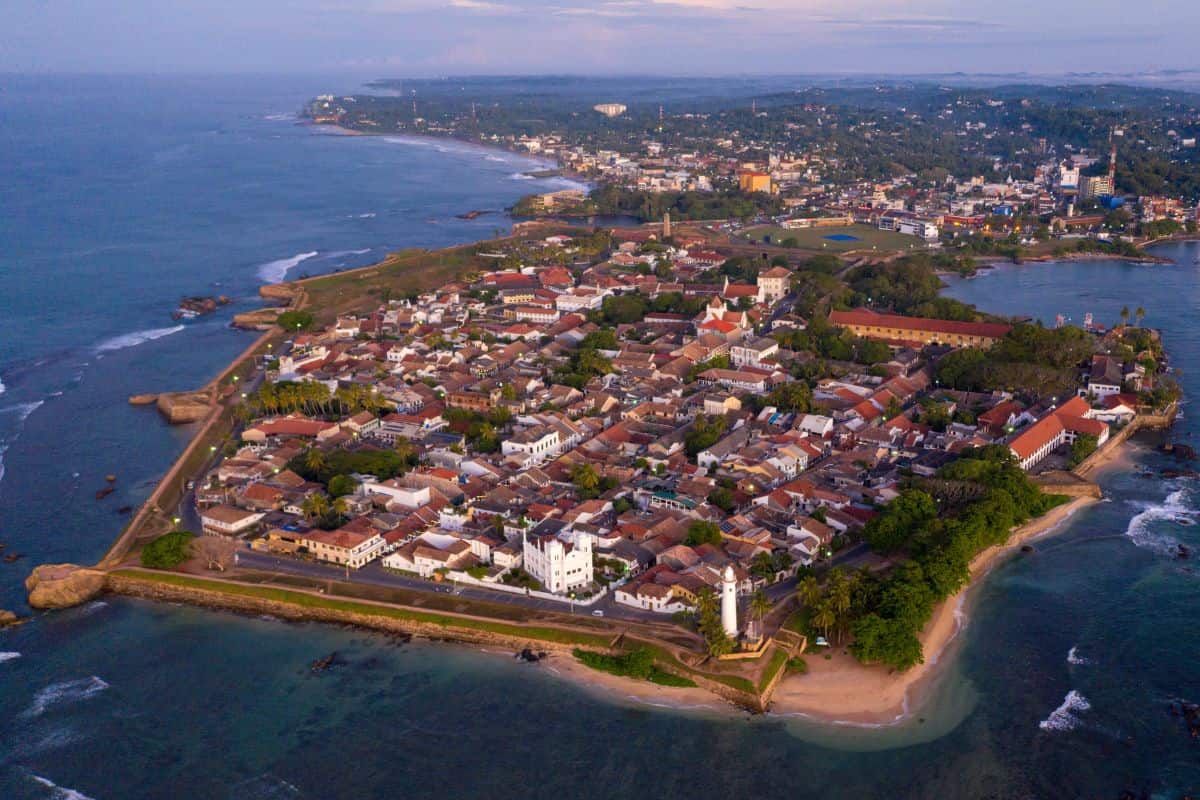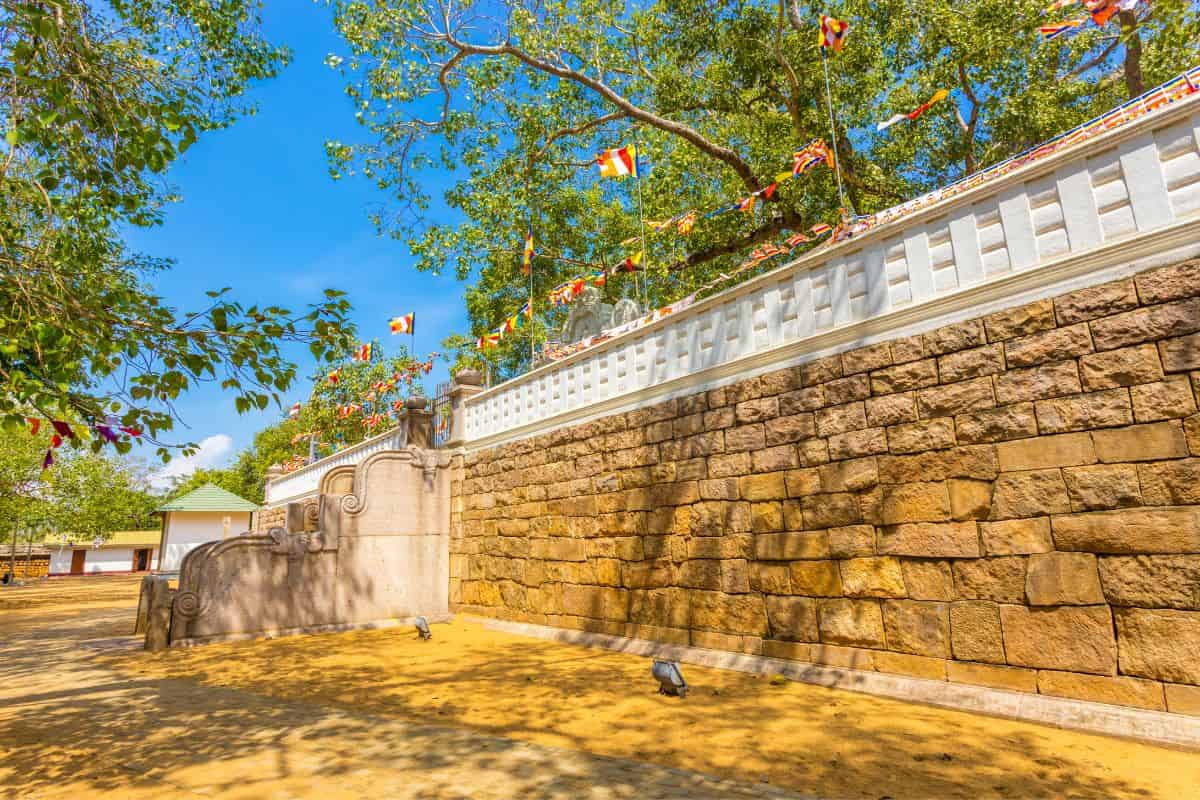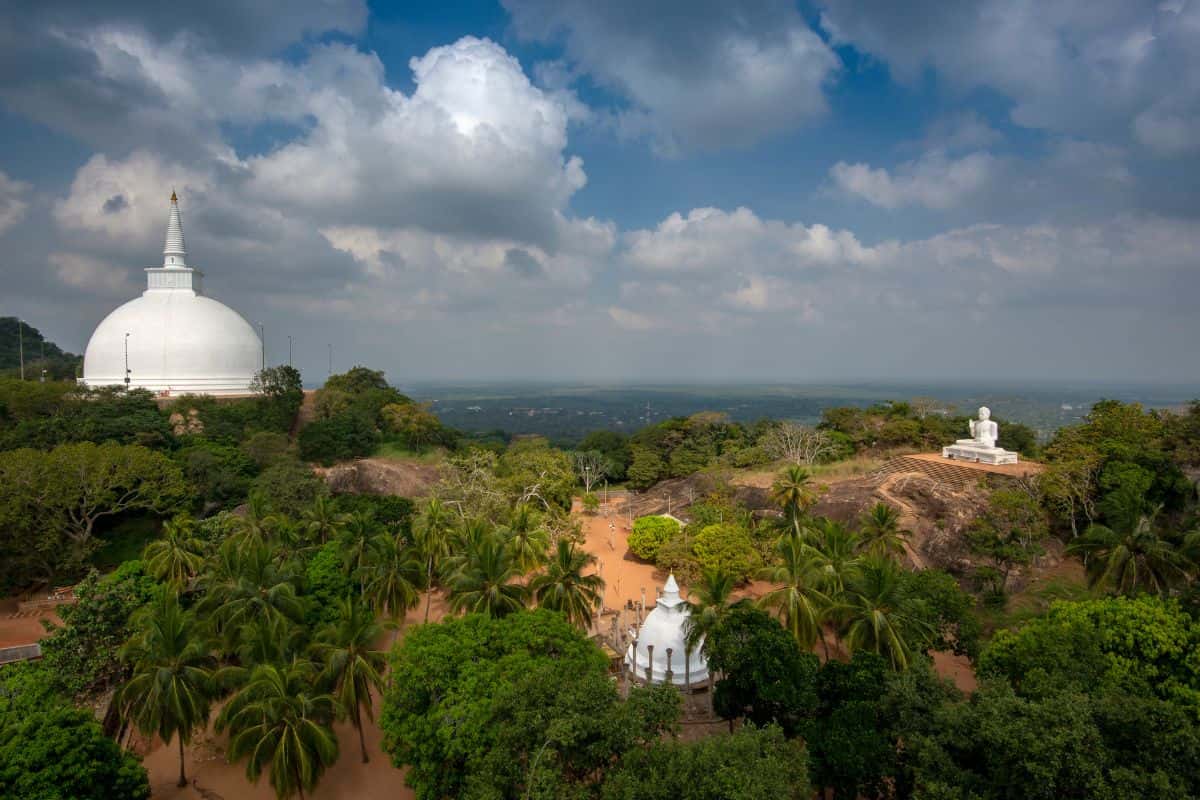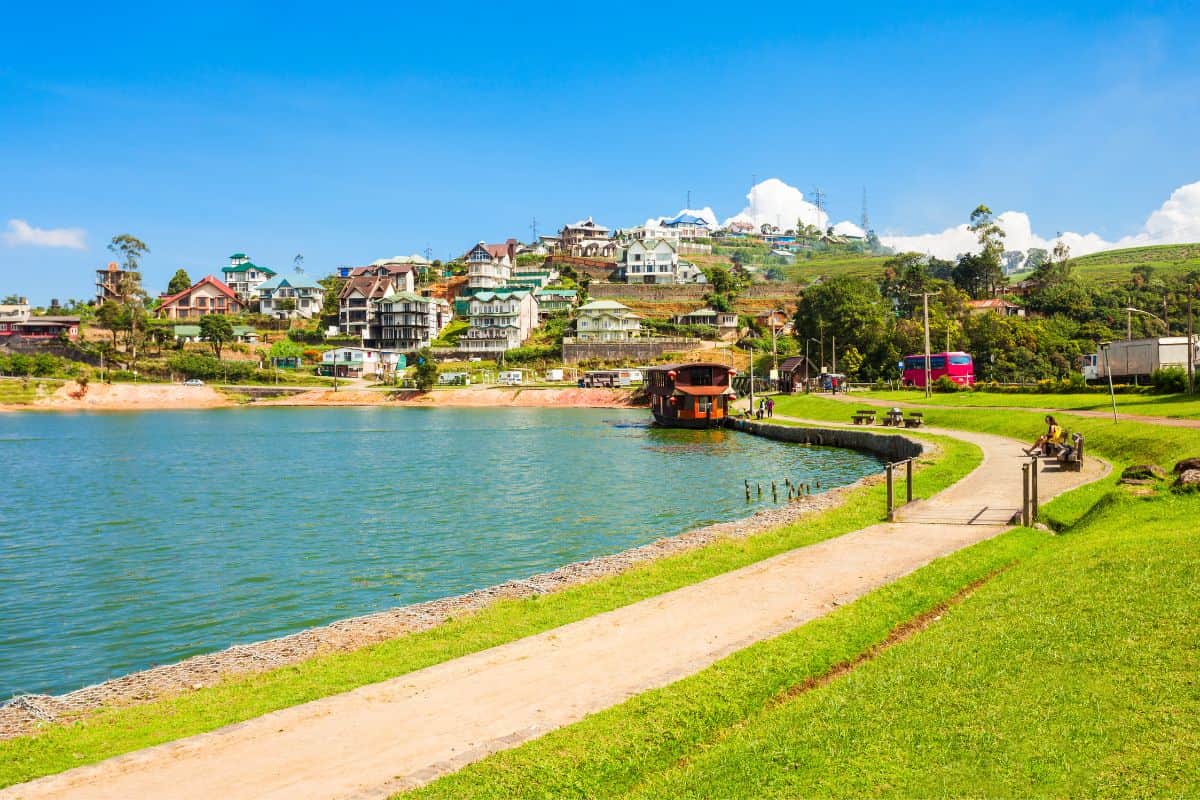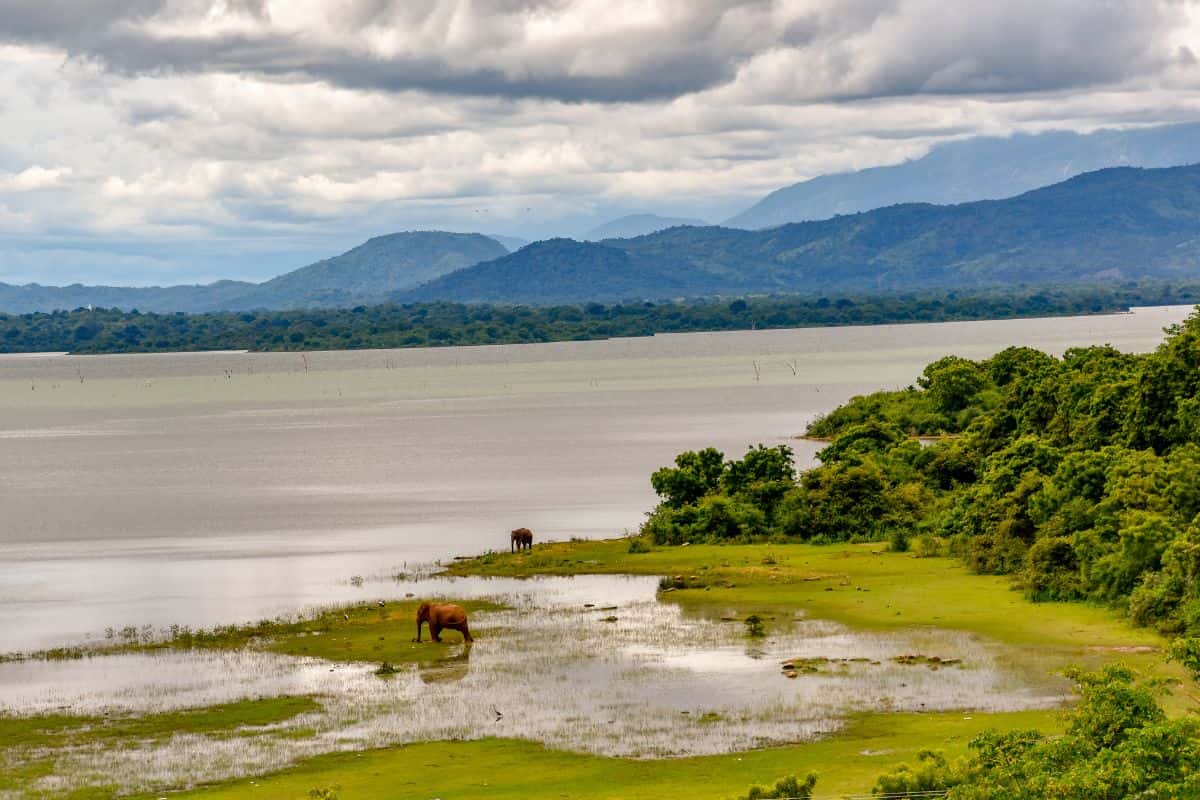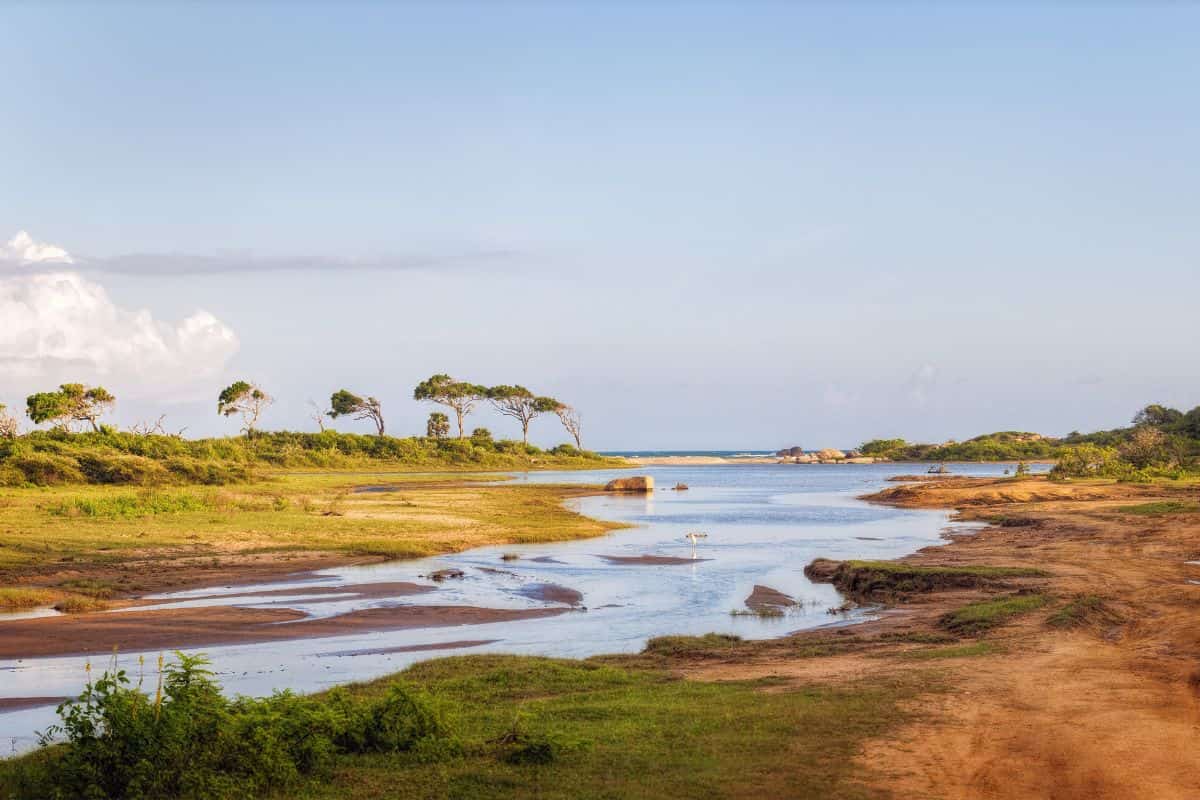Table of Contents
The geography of Sri Lanka is a captivating blend of diverse landscapes and historical significance. Situated in South Asia, this island nation’s geographic location has played a pivotal role in shaping its history and cultural identity.
Positioned off the southern tip of India, Sri Lanka geography beckons adventurous travelers with its pristine beaches, lush rainforests, and verdant highlands. From exploring the ancient ruins of Anuradhapura to experiencing the cultural vibrancy of Colombo, Sri Lanka’s diverse landscapes and rich history offer an unforgettable journey for intrepid tourists seeking a unique and enriching experience.
Sri Lanka physical geography paints a picture of awe-inspiring natural wonders. From the revered Adam’s Peak, symbolizing the nation’s spiritual significance, to the diverse ecosystems that span from the coastal mangroves to the misty hill country, Sri Lanka stands as a testament to nature’s grandeur.
Top Geographic Features of Sri Lanka
- Central Highlands: Dominating the heart of Sri Lanka, these highlands are characterized by their lush, misty landscapes, and are home to Adam’s Peak, a sacred mountain and pilgrimage site.
- Mahaweli River: The longest river in Sri Lanka, it winds its way through the central and eastern parts of the island, supporting agriculture and providing essential water resources.
- Sri Lankan Rainforests: These dense tropical forests, found primarily in the southwest, are rich in biodiversity and play a vital role in the island’s ecosystem.
- Jaffna Peninsula: Located in the northern part of Sri Lanka, this limestone peninsula is characterized by its unique cultural heritage and coastal landscapes.
- Ella Rock: A popular hiking destination, Ella Rock offers panoramic views of the surrounding landscapes, tea plantations, and the distant coastline.
- Wilpattu National Park: Located in the northwest, this park is home to a variety of wildlife, including leopards, elephants, and crocodiles, and is known for its unique willus (natural lakes).
- Arukam Bay: Positioned on the east coast, this bay is renowned for its pristine beaches, surfing waves, and coral reefs.
- Horton Plains National Park: Found in the Central Highlands, this park boasts unique landscapes like the famous World’s End cliff and is rich in diverse flora and fauna.
- Galle Fort: Situated in the southern part of the island, this UNESCO World Heritage Site is a colonial-era fortress with a rich history and well-preserved architecture.
- Yala National Park: Located in the southeast, this park is best known for its dense leopard population and a wide variety of birds, mammals, and reptiles.
Sri Lanka geographic features play a pivotal role in shaping Sri Lanka’s landscape, climate, and cultural heritage, making them essential elements in defining the island’s geography.
Sri Lanka Geography
Exploring the Sri Lanka National Geographic canvas reveals a mesmerizing array of geographic features. From the lofty peaks of the Central Highlands to the extensive sandy beaches and the lush tea plantations of Nuwara Eliya, the country unfolds a bewitching tapestry of natural wonders.
- Mountain Ranges – The Pinnacle of Splendor: Just as documentaries often showcase majestic mountain ranges, Sri Lanka takes pride in its Central Highlands. These peaks not only enhance the country’s scenic allure but also house a distinct biodiversity and have shaped its cultural fabric.
- Lakes – Windows to Tranquility: Sri Lanka’s Gal Oya National Park, known for its serene lakes, brings to mind the scenic landscapes often seen in photographs. These pristine waters, bordered by thick forests and hills, mirror the island’s geological opulence.
- Rainforests – Lush Green Sanctuaries: In a manner documentaries spotlight dense forests, Sri Lanka’s Sinharaja Rainforest represents a thick canopy of life that shelters numerous species. This verdant region whispers tales of traditional rituals and the island’s ecological significance.
- Historical Sites – Pages from Antiquity: Sri Lanka’s historical treasures, like the Sigiriya Rock Fortress, rekindle memories of voyages that have unveiled ancient dynasties. These remnants are a testament to the island’s rich Buddhist and royal legacies.
- Ethnic Diversity – A Confluence of Cultures: Echoing National Geographic’s emphasis on varied cultures, Sri Lanka is a blend of ethnicities, including Sinhalese, Tamils, and Muslim Moors. Each group offers unique traditions, languages, and practices, weaving a lively cultural tapestry.
- Wildlife – An Eden of Biodiversity: Sri Lanka’s conservation zones, such as Yala National Park, reflect the narrative of wildlife preservation. These areas are vital refuges for a plethora of species, safeguarding biodiversity in a diverse habitat.
- Geological Marvels – Nature’s Masterpieces: The island’s geological wonders, like the Adam’s Peak, highlight Sri Lanka’s natural splendor amidst the encompassing Indian Ocean. Such landmarks exhibit the captivating forces of nature in play.
- Coastal Beauty – Shores of Serenity: The pristine and expansive beaches of Sri Lanka, from Arugam Bay to Mirissa, invite travelers, akin to voyages to pristine shores. These coastal stretches offer insights into untouched maritime landscapes and vibrant marine life.
Sri Lanka geographic features are accentuated by the presence of the Central Highlands. These commanding heights, located at the heart of the country, set the stage for the island’s varied topography. The ancient pilgrimage routes, significant for Buddhist devotees, traverse these hills, connecting spiritual sites.
Meandering gracefully across the Sri Lankan landscape are the vital rivers like Mahaweli and Kelani, indispensable for agriculture and irrigation. Moreover, the coastal plains and the dense rainforests contribute to the island’s unique geography.
Sri Lanka Geographic Location
Sri Lanka geographic location is very strategic, and its position has played a significant role throughout history. Located just south of India in the Indian Ocean, the island nation has been a nexus for trade, culture, and ideas, emphasizing its historical importance.
Borders of Sri Lanka
Sri Lanka is an island nation, and thus, it doesn’t share land borders with any countries.
Geography of Colombo Sri Lanka
As the capital city of Sri Lanka, Colombo is a captivating microcosm of the country’s human geography. Here, various ethnic groups, including Sinhalese, Tamils, Moors, and Malays, coexist, contributing to the city’s vibrant cultural tapestry.
Colombo, the capital city of Sri Lanka
- City of Contrasts: Colombo is known for its stark contrasts, where modern skyscrapers coexist with traditional colonial buildings, creating a unique blend of old and new.
- Indian Ocean: The Indian Ocean borders the city, playing a significant role in its trade and transportation.
- Colombo’s Elevation: The city is located near sea level, with lush tropical landscapes surrounding it.
- Green Spaces: Colombo is home to several beautiful parks and gardens, including Viharamahadevi Park, offering a serene escape amidst the bustling city.
- Colombo’s Historical Significance: With a history deeply rooted in colonial times, Colombo has witnessed various epochs and played a pivotal role in Asian politics and trade.
- Diverse Architecture: The city showcases a diverse architectural heritage, reflecting influences from Portuguese, Dutch, British, and modern styles.
- Kandyan Dance Culture: Colombo is a hub for the traditional Kandyan dance, and its vibrant dance and music culture can be seen and heard throughout the city.
- Independence Memorial Hall: The historic Independence Memorial Hall, located in the heart of the city, is an iconic symbol of Sri Lanka’s political history.
- Colombo’s Economy: The city serves as Sri Lanka’s economic and cultural hub, attracting people from all over the country seeking opportunities and education.
- Population Growth: Colombo has experienced steady population growth, with a significant influx of migrants from various regions, leading to urbanization and infrastructure challenges.
Historical Geographical Importance of Sri Lanka
Throughout the ages, Sri Lanka’s geographical significance has made it a sought-after stage for historical drama. As empires and nations rose and fell, from the Cholas to the Sinhalese kingdoms and European colonizers, Sri Lanka geographic position played a pivotal role in shaping the world’s history.
- Strategic Island Location: Sri Lanka’s unique position as an island off the southern tip of India has made it a strategic point for trade, cultural exchange, and military endeavors throughout history.
- Ancient Trade Hubs: The ancient maritime trade routes passed through Sri Lanka, connecting the East and the West and facilitating the exchange of goods, ideas, and cultures.
- Chola Invasions: Sri Lanka was a significant territory during the Chola invasions from South India, as they sought to expand their dominion.
- European Colonization: From the Portuguese to the Dutch and the British, Sri Lanka became a focal point of colonial interests in the Indian Ocean during the 16th to 19th centuries.
- Buddhist Influence: The advent of Buddhism from India deeply influenced Sri Lanka’s culture, traditions, and history, with the island becoming a major center for Buddhist learning and art.
- Rich Cultural Mosaic: The island is home to various ethnic groups, including the Sinhalese, Tamils, Moors, and Burghers, each contributing to its rich cultural tapestry.
- European Conquests and Forts: The coastal forts, such as the Galle Fort, stand as reminders of the European invasions and their impact on Sri Lanka’s history, leading to a blend of cultures and traditions.
- Tea Plantations and Scenic Beauty: The lush tea plantations of Sri Lanka’s central highlands, along with its pristine beaches, have become symbols of the nation’s cultural and historical identity.
- Traditional Dance and Music: Sri Lanka’s rich cultural heritage gave birth to unique forms of dance and music, representing its diverse ethnic groups and influencing its culture, art, and architecture.
The geographical position of Sri Lanka, an island nation in the Indian Ocean, is a fusion of captivating beauty and historical intrigue. Known as the “Pearl of the Indian Ocean,” Sri Lanka is renowned for its stunning beaches, verdant tea plantations, rich wildlife, and ancient Buddhist ruins. Strategically located along major sea routes, it has been a melting pot of cultures and a hub for maritime trade, attracting traders, explorers, and colonizers from across the world.
In conclusion, Sri Lanka’s geographical setting has profoundly influenced its history and identity. Its central position in the Indian Ocean has made it a crucial point of contact between East and West, playing a significant role in ancient and medieval trade networks. This strategic location has also shaped its colonial history, with Portuguese, Dutch, and British influences leaving lasting marks on its culture and society. Today, Sri Lanka continues to leverage its strategic position, contributing to the economic and cultural dynamics of South Asia and the Indian Ocean region.



